#NRCP
Text

ATM: DOST-NRCP Governing Board Meeting. Entomologist Aimee Lynn A. Barrion-Dupo (UPLB) is the new President (2024-2025). Marine Scientist Gisela P. Concepcion (UP Diliman) is Vice President. 📸 Glenn Ford B. Tolentino (DOST-NRCP)
2 notes
·
View notes
Text
National Residues Control Program Public Consultation

Public Consultation on National Residues Control Programme Charges
The Veterinary Medicines Directorate (VMD) announced today, a public consultation on the proposed changes to charges for the National Residues Control Programme (NRCP). The revisions aim to enable UK, Scottish, and Welsh Governments to continue recovering the full costs of implementing the NRCP.
A Closer Look at the NRCP
The NRCP is a statutory program that helps identify residues of banned substances, veterinary medicines, and contaminants in animal-origin products destined for the food chain. Over 30,000 random samples such as eggs, milk, red meat, poultry meat, and farmed fish are collected and analyzed annually in Great Britain.
The Cost of Ensuring Safety
Currently, the VMD invoices food business operators £5m per annum to cover the costs of the NRCP, prices that have remained constant for over a decade. However, due to a projected rise in contractor procurement costs, these are expected to increase to £6.1 million by 2026.
Proposed Changes and Their Implications
To manage this expected rise, the VMD proposes to incrementally increase these statutory charges over the next two financial years. This move ensures full cost recovery, as mandated by the HMT. These changes not only safeguard public health but also reassure the UK’s trading partners about the quality and safety of exported animal-origin products, supporting international trade worth billions to the UK economy.
The Consultation Process
The consultation, running for ten weeks, can be accessed directly through Citizen Space or by visiting the VMD's new engagement website.
Abi Seager, Veterinary Medicines Directorate CEO, emphasized,
"The NRCP is fundamental to providing assurance to the UK’s trading partners about the quality and safety of exported products of animal origin. The proposed changes will ensure that we can continue to run this important program."
In Summary
The Veterinary Medicines Directorate (VMD) has initiated a public consultation on proposed charges for the National Residues Control Programme (NRCP), which safeguards the safety and quality of animal-origin products in the UK. The VMD aims to recover costs, as required by the HMT, by incrementally raising charges over two years due to expected procurement cost increases.
This move ensures global confidence in the quality of UK exports. The VMD's transparency is evident through a ten-week public consultation. These changes are crucial for both public health and supporting international trade, making them relevant to a global audience concerned with food safety and trade standards.
Sources: THX News & Veterinary Medicines Directorate.
Read the full article
#AnimalOriginProducts#ConsultationProcess#FoodBusinessOperators#Internationaltrade#NationalResiduesControlProgramme#ProposedChanges#Publicconsultation#StatutoryProgramme#UKTradingPartners#VeterinaryMedicinesDirectorate
0 notes
Text
A.L.D. Concrete Products
F: https://www.facebook.com/ALDConcreteP... Contact Us! m.me/ALDConcreteProduct Email: [email protected] Available Products: Nonreinforced Concrete Pipe - (NRCP) Available Size: 6" 8" 10" Reinforced Concrete Pipe - (RCP) Available Size: 12" 15" 18" 24" 30" 36" 42" 48" 60" 72" Concrete Hollow-Blocks (CHB) Available Size: 4, 5, 6,8 -Muhon -GRAVEL & WHITESAND -Lastillas (PANAMBAK) Tel: (049) 503 9347 Phone: Angie De Guzman - 0917 875 4582 Reynaldo De Guzman - 0917 805 7241 Location: 74CJ+F3Q ALDConcreteProduct 4025 Cabuyao, Philippines ALD will take responsibility on the damage occur during transport will be replace.
#civil construction#concrete#construction#contractor#engineering#business#aldconcreteproducts#philippines#general contractor#pipes#building
0 notes
Text
Bayer and ICAR-NRCP Partner for Pomegranate Export-Boosting Project
Bayer Crop Sciences Limited, a global leader in agricultural technologies, and the ICAR-National Research Centre on Pomegranate (NRCP), Solapur, India, have entered into a research collaboration, formalized through a Memorandum of Understanding (MoU).
This partnership aims to advance the development of the Integrated Pest & Disease management schedule (IDIPM) for producing export-quality…

View On WordPress
0 notes
Text
What are the costs associated with building, operating and maintaining an ETP and how can they be reduced?
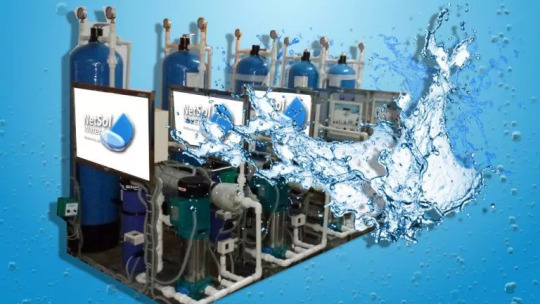
India's ecology is worse due to rapid urbanisation and economic expansion. Regarding the detrimental effects on public health and the urban environment, there is grave concern. In light of this, the GOI established the National River Conservation Plan (NRCP) and delegated responsibility for addressing the problem of environmental deterioration brought on by river pollution to the JnNURM. The goal is to enhance the water supply and sewage system by lowering pollution of the environment and water. Construction of STPs as well as effective STP O&M are crucial for ensuring improvements to the water environment. However, few Indian towns have much expertise with managing and maintaining STPs.
Let’s have a discussion on the costs associated with ETP building and O&M, and how they can be reduced.
O&M includes tasks like managing a budget, coordinating service charges, managing assets, advising on house connections, maintaining sewers, monitoring industrial effluent, pumping stations, and treatment plants, maintaining water quality, managing ledgers, protecting the environment, among other things.
Building Costs
It can be observed that the cost decreases quite abruptly as system size grows, while it is extremely high for smaller systems. In actuality, the cost of an infrastructure rises in direct proportion to the project's size, length, or volume. Installation costs generally make up between 15 and 40% of the project budget, depending on how much pre-packaging is done and how much site preparation is needed.
Thus, if we compare a STP of, say, 50 MLD to one of 300 MLD, the cost of the latter will be around 4 times minimum and 6 times maximum.
Energy Costs
Based on the kW, numbers, and hours of electrical equipment functioning, the energy expenses are easily calculated. Typically, issues cannot be thoroughly worked out during the project proposal stage. Based on comparable reported STPs, a generalisation may be made. Well, its not possible to reduce the energy costs because it all depends on the effluent quality. One thing which can be done is proper management of the energy utilized which can reduce the energy costs significantly.
Materials and Fuel
If sufficient bicarbonate alkalinity is not present in the raw sewage to the level of at least eight times the ammonia to be nitrified, chemical consumption in regard to biological STPs will primarily be for the final chlorine consumption and addition of sodium carbonate. When a new STP is being planned for, this cannot be estimated simply. Sewage often has the necessary bicarbonate alkalinity, though. Costs for gasoline and other consumables should also be estimated as needed. While putting together the DPR, it is challenging to forecast this number. Therefore, it must be regarded as having occurred at that time, but 10% of the cost of civil works must be accounted for as "unforeseen things" for future projects, and the funds must be deposited in a security that won't require them until 20 years later.
Generalized solution to reduce the costs involved:
The seed money is a provision that would be used to cover system upgrades and unanticipated costs. There are no absolute standards for determining its worth. Whether there is a revenue excess in the first place will determine this. The remaining taxes, debt servicing, cess, and duty components are added when they become available.
An iterative budgeting process is a good one. The costs are calculated first, and then the earnings are confirmed using levies. A budget with a revenue surplus can be created by changing the rate of taxes. Consumers will have the last say, and if they refuse to pay for the services they use or contest the cross-subsidy policy, there may be consequences.
Why choose Netsol!
A well-known manufacturer of water and wastewater treatment facilities is Netsol Water. We have a reputation for being the best producer of commercial RO plants, industrial RO plants, sewage treatment plants, effluent treatment plants, and much more. In addition, our USP is our round-the-clock client support. We can also assist you in cost estimation of wastewater treatment plants.
Call us at +91-9650608473 or send an email to [email protected] if you have any more questions or concerns about the purchase of a product.
#industrial ro plant manufacturers commercialroplant.com#commercial ro plant manufacturers#industrial ro plant manufacturers#commercial ro plant manufacturer#industrial ro plant manufacturer#industrial ro plant manufacture#commercial ro plant manufacture
0 notes
Text
jalmahal
t Gaitore opposite the lake are chhatris and cenotaphs erected over cremation platforms of some of the Kachwaha rulers of Jaipur. They were built by Jai Singh II within landscaped gardens.[5] The cenotaphs are in honor of Pratap Singh, Madho Singh II and Jai Singh II among others. Jai Singh II's cenotaph is made of marble and has impressive intricate carvings. It has a dome with 20 carved pillars.[2]
Restoration works[edit]
Rajasthan Tourism Development Corporation took matters in its hands in the year 2004, and decided to try and restore the monument to its original glory. They signed an agreement with Jal Mahal Resorts, granting it a 99-year lease to develop 100 acres along the Man Sagar Lake (in the middle of which Jal Mahal stands) and the palace.[6] The 99-year lease was given out to a business tycoon, Navratan Kothari Chairman KGK Group. For the past 9 years, he has worked on the cleaning of the lake and restoration of the Palace. Now there are many inhabitants of the area and it has created a great job opportunity for the people of Jaipur and Rajasthan[citation needed]. For the future, Navratan plans to build a few hotels around the Jal Mahal and make it a very popular tourist destination.
Joint sector project[edit]
Jal Mahal palace in 2011, after restoration.
The Lake restoration project of the Man Sagar Lake area with an estimated investment of ₹150 crores (considered one of the largest and unique such projects in India) has evolved a plan that has diverse project components.[7] Consequently, there are many project stakeholders and beneficiaries. The project stake holders are: the Government of Rajasthan and their subordinate organizations such as the Public Works Department (PWD), Rajasthan Urban Development Authority (RUIDP), the Jaipur Development Authority (JDA – the nodal agency for implementation of all aspects of the project), the Department of Tourism, Rajasthan Project Development Fund (RPDF) and the Rajasthan Tourism Development Corporation (RTDC) and an Empowered Committee on Infrastructure Development (ECID); the Central Government organizations associated for planning and financing are the Ministry of Environment and Forests (MOE&F) through its National River Conservation Program (NRCP) and ILFS.[7]
The Private Sector Developer (PSD) appointed was M/s KGK Consortium. Under the public-private sector partnership model approved by the EICD, PDCOR had prepared the Detailed Project Report (DPR) for the restoration of Man Sagar Lake, Jal Mahal restoration and lake precincts development. The total project area for restoration and development approved by ECID was 432 acres (175 ha) comprising the lake with 300 acres (120 ha) water spread, the lake precincts area of 100 acres (40 ha), which subsumed 15 acres (6.1 ha) of submerged land) for tourism development under joint sector cooperation and 32 acres (13 ha) for lake promenade and tertiary treatment facility and related works.[8]
The studies indicated two approaches to tackle the environmental degradation that had occurred in the lake, namely, dealing with natural catchment area and concurrently addressing the serious problem of municipal sewerage emerging from large scale urbanization or human settlement. Keeping this broad planning approach in view, under the lake restoration project, the works undertaken involved were: the re-alignment of city drains, de-silting of the lake, construction of artery road from Amber to Man Sagar Dam (about 2.7 kilometres (1.7 mi)), construction of check dam in a 100 metres (330 ft) length with silt removed from the lake, creation of three nesting islands for migratory birds, lakefront promenade in1 kilometre (0.62 mi)), afforestation and treatment of forest area portion of lake catchment, plantation to stabilise the slopes of bank formation. Afforestation envisaged plantation of local plant species such as Acacia arabica (desi babool) and Tamarix indica (planting close to the water edge where they can grow well), Terminalia arjuna (Arjun) poplar, neem and all species of Ficus, which would provide diversity in vegetation and also better habitat diversity for feeding by birds and wildlife.[3][9]
In addition, to remove eutrophication of the lake water and improve its water quality, in-situ Bioremediation process with 140 diffusers & 5 air compressors to aerate and create an inversion of the lake bed and stored water was also envisaged. The city sewage, which supplied 7.0 MLD of untreated sewage was treated with Sewerage Treatment Plant (STP) and then led to the lake to maintain its water level, after due removal of nutrients through tertiary treatment. This process involved diversion of the Brahampuri Nala into the Nagtalai Nala by a lined channel to its south. This was then led through a treatment plant on site to generate secondary level effluent, which was then discharged into an artificial wetland through a hyacinth channel. For this purpose, a Physico Chemical Treatment Plant was also envisaged and the effluent from this plant was taken through artificially created wetlands in an area of 4 hectares (9.9 acres)) (not only to treat the water but also to serve as natural habitat for birds) and through this process the entire eco-system is being re-generated. Vegetation generated in this process is disposed of in a compost pit near the lake.[3]
It is also reported that about 500,000 cubic metres of silt was removed from the lake. This silt was then put to use for a strengthening of embankment and building of islands as wintering grounds for migratory birds.[10]
After the above initial restoration works of the lake and its feeder system were mostly completed by the JDA, during 2003, private sector developers were invited to develop identified tourism components on the land adjoining the lake. After following the due process, a joint sector undertaking called the PDCOR was formed between the JDA of the Rajasthan Government and the consortia of private developers with the lead provided by M/s. KGK Enterprises. The project for tourism development was entrusted to this joint group. The tourism project entailed the development of Convention Centre and Art Gallery, Multiplex and Entertainment Centre, Craft Bazaar, Arts and Craft Village, Resort Hotels, restaurants, and food courts, public park and gardens including responsibility for restoration and maintenance of the Jal Mahal.[7]
The interior of the Jal Mahal Palace is not open to visitors.
he studies indicated two approaches to tackle the environmental degradation that had occurred in the lake, namely, dealing with natural catchment area and concurrently addressing the serious problem of municipal sewerage emerging from large scale urbanization or human settlement. Keeping this broad planning approach in view, under the lake restoration project, the works undertaken involved were: the re-alignment of city drains, de-silting of the lake, construction of artery road from Amber to Man Sagar Dam (about 2.7 kilometres (1.7 mi)), construction of check dam in a 100 metres (330 ft) length with silt removed from the lake, creation of three nesting islands for migratory birds, lakefront promenade in1 kilometre (0.62 mi)), afforestation and treatment of forest area portion of lake catchment, plantation to stabilise the slopes of bank formation. Afforestation envisaged plantation of local plant species such as Acacia arabica (desi babool) and Tamarix indica (planting close to the water edge where they can grow well), Terminalia arjuna (Arjun) poplar, neem and all species of Ficus, which would provide diversity in vegetation and also better habitat diversity for feeding by birds and wildlife.[3][9]
In addition, to remove eutrophication of the lake water and improve its water quality, in-situ Bioremediation process with 140 diffusers & 5 air compressors to aerate and create an inversion of the lake bed and stored water was also envisaged. The city sewage, which supplied 7.0 MLD of untreated sewage was treated with Sewerage Treatment Plant (STP) and then led to the lake to maintain its water level, after due removal of nutrients through tertiary treatment. This process involved diversion of the Brahampuri Nala into the Nagtalai Nala by a lined channel to its south. This was then led through a treatment plant on site to generate secondary level effluent, which was then discharged into an artificial wetland through a hyacinth channel. For this purpose, a Physico Chemical Treatment Plant was also envisaged and the effluent from this plant was taken through artificially created wetlands in an area of 4 hectares (9.9 acres)) (not only to treat the water but also to serve as natural habitat for birds) and through this process the entire eco-system is being re-generated. Vegetation generated in this process is disposed of in a compost pit near the lake.[3]
It is also reported that about 500,000 cubic metres of silt was removed from the lake. This silt was then put to use for a strengthening of embankment and building of islands as wintering grounds for migratory birds.[10]
After the above initial restoration works of the lake and its feeder system were mostly completed by the JDA, during 2003, private sector developers were invited to develop identified tourism components on the land adjoining the lake. After following the due process, a joint sector undertaking called the PDCOR was formed between the JDA of the Rajasthan Government and the consortia of private developers with the lead provided by M/s. KGK Enterprises. The project for tourism development was entrusted to this joint group. The tourism project entailed the development of Convention Centre and Art Gallery, Multiplex and Entertainment Centre, Craft Bazaar, Arts and Craft Village, Resort Hotels, restaurants, and food courts, public park and gardens including responsibility for restoration and maintenance of the Jal Mahal.[7]
The interior of the Jal Mahal Palace is not open to visitors.
See also
0 notes
Photo

WWW.HABANOSTAR.COM Cuban cigars for sale, worldwide shipments. check my bio link 🔗 📦🌍✈ . 📷@thecigarbum @habanostar www.habanostar.com . . #ramonallones #hupmann #partagas #hoyodemonterrey #montecristo #cohiba #habanos #cigarphotography #habanostar #cigarporn #cigarlife #trinidad #cigarsociety #sotl #cigarlover #botl #cuban #bolivar #cigars #topcigars #cigarsnob #cigaraficionado #cigar #cigarmoments #cigarfamily #cohibacigar #cigarsocialclub . . www.habanostar.com https://www.instagram.com/p/B5Sc9J-nrcP/?igshid=r0ia7t53by6c
#ramonallones#hupmann#partagas#hoyodemonterrey#montecristo#cohiba#habanos#cigarphotography#habanostar#cigarporn#cigarlife#trinidad#cigarsociety#sotl#cigarlover#botl#cuban#bolivar#cigars#topcigars#cigarsnob#cigaraficionado#cigar#cigarmoments#cigarfamily#cohibacigar#cigarsocialclub
1 note
·
View note
Text
House partners with DOST to synergize research and policy-making
House partners with DOST to synergize research and policy-making
In collaboration with the Department of Science and Technology – National Research Council of the Philippines (DOST-NRCP), the House of Representatives held on Thursday, February 7, a forum to bridge scientific research and policy development.
The “NRCP – Legislative Scientific Forum for Policy Development” proposes to create synergistic and collaborative work between the NRCP and the House,…
View On WordPress
0 notes
Text
NRCP, SCC, IDCC - Free Analysis - January 10, 2018
Get this free technical stock analysis of NRCP, SCC and IDC as of January 10, 2018. Learn our insights about the support and resistance levels of the stocks, moving averages, MACD, RSI, and our interpretation of our proprietary price-volume distribution chart.
National Reinsurance Corporation (NRCP) continues its bullish trend today. Its moving averages are bullishly aligned with the 15 EMA possibly acting as support. Volume supports a bullish bias. MACD is bullish. RSi is also bullish but is already at overbought levels. Support is estimated at 1.19 followed by 1.12. Resistance is expected at 1.29. Price-Volume Distribution Majority of the volume was…
View On WordPress
#IDC#IDC analysis#Italpinas Development Corporation#Italpinas Development Corporation analysis#National Reinsurance Corp#National Reinsurance Corp analysis#NRCP#NRCP Analysis#SCC#SCC analysis#Semirara Mining and Power Corp#Semirara Mining and Power Corp analysis
0 notes
Photo

nag-sama ang mga baliw hehe 😂 si Joey dapat sinama natin haha 😂 #amazingadventuresofbeaujethro #picc #friends #crazy #nrcp #filipinoscientist #happiness #love (at Philippine International Convention Center)
0 notes
Text

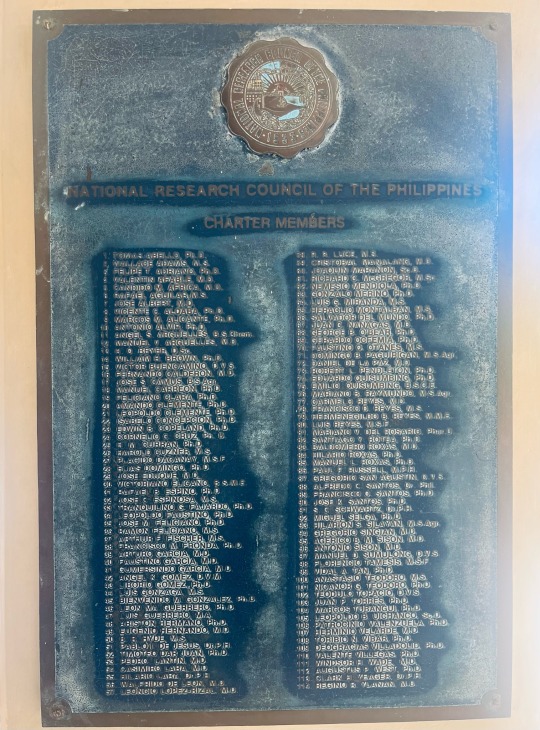
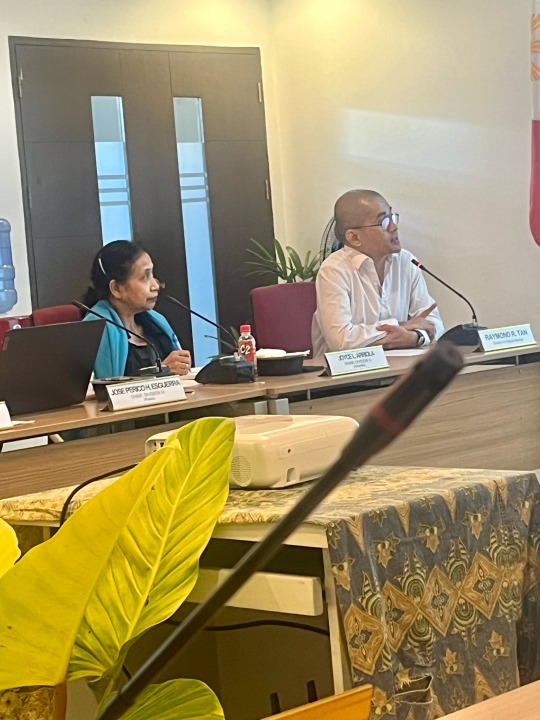
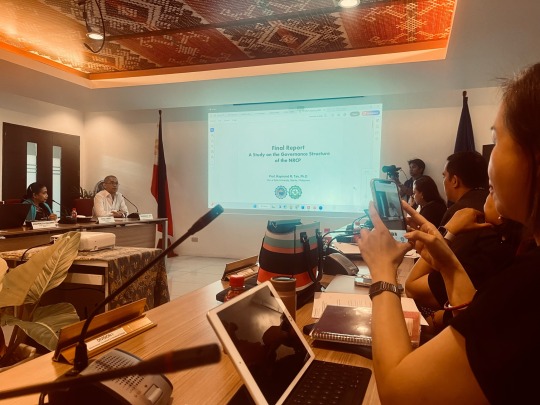
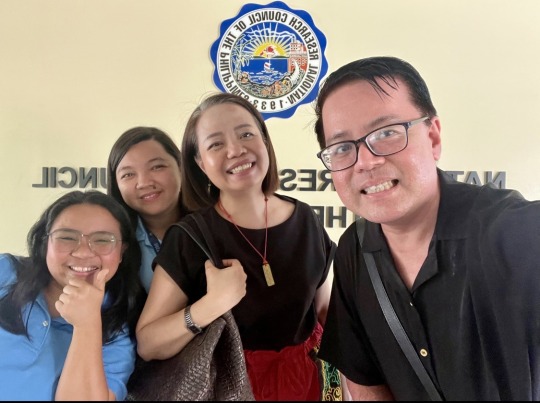

At the 1,090th Regular Meeting of the DOST-National Research Council of the Philippines (NRCP) Governing Board on 30 April 2024. Entomologist and former UP Faculty Regent Dr. Aimee Lynne Barrion-Dupo is the new President. DOST-NRCP was established through Act No. 4120 of the 9th Philippine Legislature on December 8, 1933, to advance research in the various disciplines.
DOST-NRCP's charter members in 1933 include Victor Buencamino (the 1st Filipino to earn a Doctor of Veterinary Medicine degree at Cornell, the 1st Filipino President of the Philippine Veterinary Medical Association and the 1st Filipino to establish a veterinary hospital in the Philippines), anthropologist H. Otley Beyer, obstetrician Fernando Calderon (the 1st Filipino UP College of Medicine Dean and the first Filipino UP PGH Director), UPLB pioneering professors Edwin Copeland (botany) and Harold Cuzner (agronomy), National Scientist Francisco Fronda (Father of Poultry in the Philippines and Thailand), UP President Bienvenido Gonzalez (1939-1954; 1945-1951), botanist Leon Ma. Guerrero (the 1st licensed Filipino pharmacist), botanist Eduardo Quisumbing (whose “Medicinal Plants in the Philippines” is the forerunner of all research on medicinal plants in the country), former FEU President and UE co-founder Hermenigildo Reyes, iconic UP College of Medicine Deans Antonio M. Sison (1937-1951) and Agerico B.M. Sison (1951-1960), forester Florencio Tamesis (the Father of Philippine Forestry), UP President Vidal Tan (1951-1956), UP Pharmacy Dean Patrocinio Valenzuela, and 4-time Far Eastern Games gold medalist for athletics Regino Ylanan (later, he became a physician, a 1928 Amsterdam Olympics coach, and the first Filipino to graduate with a sports science degree from the United States. At age 30, he was appointed UP's physical education director. He also founded the NCAA and headed the Philippine delegation to the 1936 Berlin Olympics).
Subsequently, Republic Act No. 2067, known as the Science Act of 1958 and enacted on June 13, 1958, led to the creation of the National Science Development Board (NSDB). Section 20 of this Act designated the DOST-NRCP as the official advisor on scientific matters to the Government of the Philippines.
Executive Order No. 784, issued on March 17, 1982, restructured the National Science Development Board into the National Science and Technology Authority (NSTA). In this new framework, the DOST-NRCP was identified as one of the science and technology councils under the Authority for coordinating policies and programs.
Under Executive Order No. 128, dated January 30, 1987, the NSTA underwent further reorganization, renaming the NRCP as the Philippine National Science Society (PNSS).
However, the agency's name was eventually restored to the National Research Council of the Philippines through Republic Act No. 6974 on December 8, 1990.
The DOST-NRCP's mandate includes promoting and supporting fundamental research to enhance the capabilities of researchers and research groups, offering advice on national issues, fostering a culture of research across sectors, and establishing partnerships with local and international institutions for collaboration in information development and sharing.
0 notes
Photo

Small fix to SS ratchet. It's also more movie accurate. #transformers https://www.instagram.com/p/BwZCTp-nRcp/?utm_source=ig_tumblr_share&igshid=1h3u7ym684kbk
1 note
·
View note
Text
Sewage treatment plants in Odisha
There is no Sewerage System in maximum of the cities in Odisha at present. Most of the households discharge the sewage into drains and waterways causing solemn public health and ecological hazards to the persons. Some of the households use festering tanks followed by soak left pits for assembly of sewage. In septic tanks the sewage effluent is permitted infiltrate into the crushed via soakpit while slush is amassed in the tank. The slush collected from the septic tanks is elated and disposed oferratically at numerous places in the town.
The untreated sewage in torrents and waterways can be possible sources of sewage borne diseases as the sewage comprises pathogens which can posturegrave disease such as Cholera, Typhoid, Dysentery etc. Discharge of unprocessed sewage into streams or ponds similarly cause environmental dilapidation as the animate material in the sewage can exhaust the oxygen content of the streams, ponds and other water bodies and thus making them inappropriate for fish and other marine species to exist. Sewage pollution of low-surface ground water which will be used by the public for drinking determinations.
Sewage treatment plants in Odishais the procedure of removing pollutants from wastewater. It comprises physical, chemical, and biological procedures to eliminate these pollutants and harvest environmentally safe preserved wastewater. Pathogens or disease-causing organisms are contemporary in sewage which needs to be uninvolved before the sewage can be unconfined back into the environment. The objective is to decrease or remove organic matter, solids, disease-causing organisms, nutrientsand other contaminants from the sewage.
BHUBANESWAR: in this temple city set up three sewage treatment plants (STPs), each having size of 50 million litre per day (MLD) below the National River Conservation Plan (NRCP) for preservation of Mahanadi, Mangala and Brahmani rivers in Odisha.
Sewerage Projects taken-up by OUIDF
Sewerage System of Sambalpur Town
It is proposed to set up a Sewage Treatment Plant (STP) on a modular method in a phased method as the populace grows. An STP with size of 42 MLD at Bhatra planned to serve all catchment zones of Sambalpur town for a plan period 10 years. The dealing plant will be enlarged every ten years as the populace grows to meet the extra capacity. The ultimate design passé of the plant is 30 years. The technology assumed for the sewage treatment plants in Odisha is Activated Sludge Process (ASP).
Sewerage System of Rourkela Town-East
Rourkela East encompassesmostly Koel Nagar, Jagada, Jhirpani and adjacent zones. The existing Sewerage Organization in Koel Nagar is not functioning well, as it has helped its design life and itsrequirements to be swapped. Reduction of pollution to river Koel will be attained by providing Sewerage Scheme to Rourkela East zone. The assessed average sewage flow for year 2030 is 8 MLD and therefore STP of 8 MLD based on Sequential Batch Reactor (SBR) expertise has been planned. The sewage treatment plants in Odishafor Roureka East includes laying of sewerage network of a whole length of 46.4 Km which would protection all the 3 sewerage catchments of Rourkela- East. The superiority of sewage after conduct for disposal in river shall obey with National River Conservation Directorate (NRCD) Effluent Values. The total Project Cost is Rs.89 cr. approx.
Sewerage System of Rourkela Town-West
Rourkela West is the Metropolis area except Rourkela-East and Bondamunda which is a railway cluster. The key apparatuses of the Project are Sewer Network of 189 Km, Four Midway Sewerage Pumping Station, one Terminal Sewage Pumping Station too one Sewage Treatment Plant of 40 MLD created on Sequential Batch Reactor (SBR) Expertise.
0 notes
Photo

Wednesday morning in Ordu ⛅ #tuesday #tuesdaymorning #tuesdayvibes #tuesdaymood #selfie #selfieaddict #selfietime #selfies #instagood #instabeauty #naturalbeauty #naturalhair #naturalbeard #instaface #face #instahair #instaeyes #eyes #me #i #xoxo #awesome #turkey #ordu #şahincili https://www.instagram.com/p/CRSwDq-NRCP/?utm_medium=tumblr
#tuesday#tuesdaymorning#tuesdayvibes#tuesdaymood#selfie#selfieaddict#selfietime#selfies#instagood#instabeauty#naturalbeauty#naturalhair#naturalbeard#instaface#face#instahair#instaeyes#eyes#me#i#xoxo#awesome#turkey#ordu#şahincili
0 notes
Photo

e yung seatmate kayo ni Doc Mang Tani sa NRCP General Membership Assembly 😂❤ atm: Doc Fr. Alejo delivering the keynote on Phil. Devt.; Foregrounding Ethical and Moral Values... and yes NRCP must be a Council of Conscience and cannot be apolitical especially these days... #amazingadventuresofbeaujethro #nrcp #dost #nationalresearchcouncil #philippines #picc #moralvalues #science (at Philippine International Convention Center)
#philippines#amazingadventuresofbeaujethro#dost#nationalresearchcouncil#picc#science#moralvalues#nrcp
0 notes
Text
Juniper Publishers- Open Access Journal of Environmental Sciences & Natural Resources
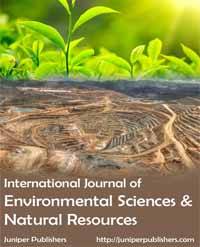
Rivers Conservation Challenges and Opportunities: A Case Study of BundelKhand, Madhya Pradesh, India
Authored by Hemant Pathak
Abstract
Bundelkhand, MP (Population around 7.3 millions) is facing huge scarcity of water despite the presence of various big rivers like Betwa, Ken, Dhasan, Sonar and their various other tributaries, has become a synonym for drought, unemployment and perennial water stress. Agriculture in Bundelkhand is rain fed, diverse, complex, under-invested, risky and vulnerable. In addition, extreme weather conditions, like droughts, shortterm rain and flooding in fields add to the uncertainties and seasonal migrations. River channels and its adjoining areas have long been exploited for construction grade aggregates like sand and gravel, indiscriminate sand mining from rivers and its basin areas imposes many harmful effects on the environment and impacted upon geologic and geomorphic settings, river side, resource availability, climatic conditions, etc. in order to mitigate the impact of sand mining on the environment, a scientific evaluation assessment is a pre-requisite for framing sustainable development strategies for the mining-hit areas. River management is key to socio-economic sustainability. There is a need to develop a locally relevant policy for sustainable development. Every year huge migration occurs due to looming food and livelihood crisis. Sustainable development is a broad and complex subject but has no alternative, especially when we look at challenges and miseries of Bundelkhand water scarcity. River Water management need to be undertaken as a mission for socio-economic uplift and to remove disparities.
Keywords: Bundelkhand; River Water Management; Sustainable Development
Introduction
Rivers are amongst the most important ecosystems for biotic and abiotic components, it is a essential services for mankind, fighting from various anthropogenic activities on Earth. Major source of water in Bundelkhand region's rivers fed by monsoon rain. In Bundelkhand Rivers are threatened by various problems, including deforestation, urbanization, overexploitation of resources, over industrialization and consequently reception of an increasing variety of chemical pollutants and biodiversity depletion [1]. Scarcities of water escalate in this region, creating serious problems for local people and the environment.
Bundelkhand Population reached around 7.3 million and projected to rise to 8 million by 2030. Almost 80.5% of Bundelkhand's population lives in rural areas (2011 census), and most of this population is dependent on agriculture, shepherd and Fishing for livelihood. Approximately 60% of the populations are workers, and of them, nearly 60% are working as cultivators and agricultural laborers [2].
Methodology and Study Area
The Betwa River contributes around 50% of the water available in the Bundelkhand upland and Bundelkhand plain subregions; the Ken contributes another 25%. The Betwa, Ken, Pahuj, Bina, Sonar, Bewas, Sind and Dhasan are prominent for irrigation in the region. Their seasonal variations however are very large. In the present study data from two important Rivers and their several tributaries were considered. Betwa River - originates from groundwater re-charge near Jhiri village in the Vindhyas; Ken River - Ken River originates near village Ahirgawan on the northwest slopes of Barner Range in Jabalpur district. Case for a current period analyzed [3].
Challenges associated with Betwa River
Total length of the Betwa River from its origin to its confluence with Yamuna is 573 km long with a total catchment area of 46580 Sq.Kms. Rampant violations of environmental norms by industries and gross negligence on the part of regulatory authority are the main cause of river pollution [4]. The River Betwa plays a significant role in the human life of the Bundel khand region. This river is mainly polluted by the industrial and urban wastes from industrial areas nearby, Bhopal (Capital of Madhya Pradesh) viz. Mandideep and other big populated districts like Vidisha and Raisen. Betwa receives a heavy BOD and COD loads from urban and industrial sources by anthropogenic activities. The dis-charge from Bhopal alone is approximately 11,000 cum of wastewater, which has a BOD load of 1200 kg per day. The water in the upper reaches of the river industrial estates in Bhopal and Raisin dis-tricts let out their effluents into the Betwa, is polluted with a heavy load of inorganic constituents.
The main source of pollutants generating both organic and inorganic waste was found to originate from illegal agriculture activity, unsustainable development and household activities of indigenous people. In 1997, NEERI Nagpur monitored on river water quality parameters, revealed that the water quality of the river is very bad that it cannot be used even for irrigation purposes [5] . The Betwa River has been selected by the National River Conservation Plan (NRCP) for cleaning and pollution control. These days Betwa river is dying a slow death by the sand mafia has plundered it in the region, where the illegal sand mining business is worth hundredth billion per year. The Betwa carries heavy granules that are useful in building as well as road construction [6] . This river that flows from the Vindhyan range was once the home of a variety of aquatic fauna. Agriculture and fishing culture flourished in its river basin area. Now, the 358-kilometre stretch of the river flowing through Lalitpur, Jhansi, Jalaun and Hamirpur is fast turning into a barren area as earthmovers extract sand from the river bed.
Socio-Economical, Environmental Importance of Betwa River
Betwa is the lifeline for the region through which it flows. Betwa Rivers with its tributaries Chureigaura, Bhakha, Barva, Dhasan and Jamini are the bloodstreams which gives life to the Bundelkhand. The Betwa has been dammed at Matatila and multipurpose interstate Rajghat Dam has been recently built for generation of electricity as well as irrigation. It is the major source of irrigation for the area known for the production of high quality wheat, gram and soybean in the country [7]. Betwa was the home of various aquatic species like crocodiles, dolphins and otters, but now these species are hardly seen in the area. Betwa play a significant role in many aspects of human life which has been guiding the socio-economic-politico and cultural attributes of the human, who were closely associated with the rivers in the initial phases of the cultural evolution.
Challenges associated with Ken River
Total length of Ken River is 427 kilometers has an overall drainage basin of 28,058 km2, out of which 12,620 km2 belong to Sonar River its largest tributary, whose entire basin lies in Madhya Pradesh; and along its 427 kilometers course it receives water from its own tributaries such as Bawas, Dewar, Kaith and Baink on the left bank, and Kopra and Bearma of the right [8]. The river, as a tourist place is losing its prominence. Urbanization along with the formation of factories and emerging thermal power projects have caused massive pollution and contamination of the river over the ages and this has made it typically unfit for any kind of domestic usage.
Socio-economical, Environmental importance of Ken River
Ken River is very important for drinking, irrigation, Tourism, Transportation and rare fauna and flora. Some of the attractive tourist places situated on this river are the Raneh falls and the Ghariyal Sanctuary. The river also crosses across the Panna National Park which also is a well known tourist attraction. Finally, this river is most famous for its rare Dendritic Agate stone. Ken determines many factors in the society like population density, demand and supply of staple foods, food security etc. All these characteristics makes the importance of Ken in the economy of the BundelKhand and it is the significance of river which is the basic frame for the economy of a nation like India where agriculture is the main livelihood activity of the majority of the Indians with ever growing population [9]. It provides drinking water to 3 million people, and provides foods, irrigations, transportations and important for hunters, anglers, boaters and other outdoor enthusiasts with exceptional recreational opportunities.
Sonar River: Challenges and Socio-economical, Envi-ronmental importance
The River Sonar is a rain-fed river. Its overall length is more than 250 km. It flows south to north; It drains an approximately 12000 square kilometer area of the southern boundary of Bundelkhand. The natural water bodies are continuously getting contaminated by the discharge of sewage, industrial and other wastes originated from anthropogenic activities. The water quality and pollution of surface water disrupts algal communities which can affect the entire aquatic food web that will result is a serious threat to life. Few government project are planned on the river for provide water for agriculture and electricity production. Pancham nagar project are planned on Bewas river main tributary of the Sonar River for provide water by canal for agricultural use and provide full amount water for former dry lands. Another project is Saksuma Dam for production of electricity on main river Sonar [10].
Proposed Conservation strategies for Rivers
The rising issue in Bundelkhand is that there is no well established water management plan. It is important to implement water conservation and management in rainfall season not drought times. The government has not promoted awareness for river conservation and cleanliness; people have lost their traditional respect to save their water resources. To applied modern technology like remote sensing and GIS (geographical information system) to carry out a survey and the problem is not just deficit rainfall but the adaptive capacity should be developed by farmers.
Strategies may include:
a. Reconnecting the river with its flood plain.
b. Reforesting along rivers.
c. Creates strict law and regulation on effluent discharge.
d. Working with farmers to identify sustainable approaches to land use.
e. Acquiring land and conservation easements.
f. Working with landowners on voluntary River management practices,
g. Strict bane on unlawful Mining's
h. Rigid Law to Conserve flora and Fauna, and
i. Building support for the river at both the highest levels of government and the community level.
River networking
In the era of climate change; river networking is the need of time for development. Government of India has developed a new National Water Policy which claims that water is a prime natural resource, a basic need and a precious national asset. In Bundelkhand Ken-Betwa Linking Project approach to their last stage to generate electricity and proper drinking water supply [11] . This project also promotes national integration and a fair sharing of the country's natural water wealth also shows and promises a great concern for water conservation and optimum use of available water resources. Farmers migrated and sold their livestock as they are unable to provide an adequate drinking water supply for their livestock. Networking prove to be important to increased in the crop production and livestock output. Groundwater recharge and irrigation will increase in and outside the command area, which will enable availability of water to the fields, villages, towns and industries of this backward area throughout the year.
Results and Discussion
Evaluation of different aspects of study area revealed that the intensity of pollution increased as the rivers was subjected to sewage and industrial waste. In order to manage the pollution load of River Betwa, Ken and their tributaries, it is recommended that various methods of sewage industrial waste treatment should be used before disposal of effluents. This is a study to aware the people how they have contaminated the source of life, facing many changes due to the development of urbanization and industrial evolution [12]. Traditional knowledge of water conservation has been lost in the region past many years. Need of community- oriented River management practices hold the key to the region's water and agrarian problems. Throughout Bundelkhand, women spent several hours per day to collect drinking water. Existing management policies including national water resources legislation, community based natural resource management schemes, and the protected area network that now epitomizes the Bundelkhand rivers conservation paradigm cannot adequately curb most impacts.
Riverine ecology suffering from dramatic decreases that threaten the functioning of these ecosystems and the services and benefits. River conservation is the crucial issues to understanding of societal needs and policymakers. Due to River water scarcity farmers in Bundelkhand faced a famine-like situation after deficient rainfall in 2014 and 2015, but that is not all. The region has faced an unending spell of natural disasters continuous drought between 2003 and 2010 floods in 2011, a late monsoon and deficit rain in 2012 and 2013; and then the droughts. Bundelkhand Rivers ecosystems are being irreversibly disturbed because of increased anthropogenic activities. As more water is withdrawn and consumed for human uses. Scarcity of freshwater results from the unequal distribution, mismanagement of water by peoples and River water pollution that makes water unusable.
Conclusion
Rivers are the fastest ecosystems to recover from disturbance, and it is possible to restore them to healthy states. There is an urgent need to take Socio-economic, environmental concerns related to River water management so a very detailed hydrological, geological, meteorological and environmental analysis of the each River and their tributaries would be imperative in the benefit of Bundelkhand (victim of recurrent drought), India. As the conventional state-sponsored river conservation programmes have focused on the main stem of the rivers ignoring the tributaries, it is essential to the management of key tributaries like Sonar River. Since the studies aims to attention of Government of India on the ecological health of the River, it is important that the strategies implemented under each component of the programme are complementary to each other, with synergies being built between the components. There is an urgent need to shift the Rivers conservation paradigm, broadening its current forest-centric focus to encompass the freshwater ecosystems that are vital components of the basin.
For more articles in Open Access Journal of Environmental Sciences & Natural Resources please click on: https://juniperpublishers.com/ijesnr/index.php
#Juniper Publishers Indexing Sites List#juniper publishers journals#Aquatic and environmental engineering#Geo Morphology#Human Ecology#Hydrology#Oceanography#Waste Management and Disposal
0 notes